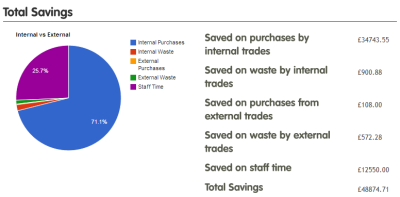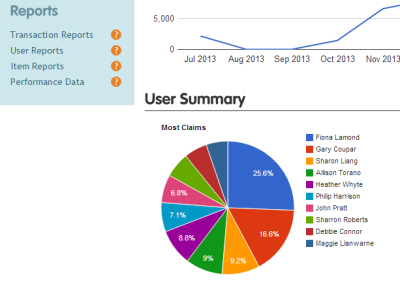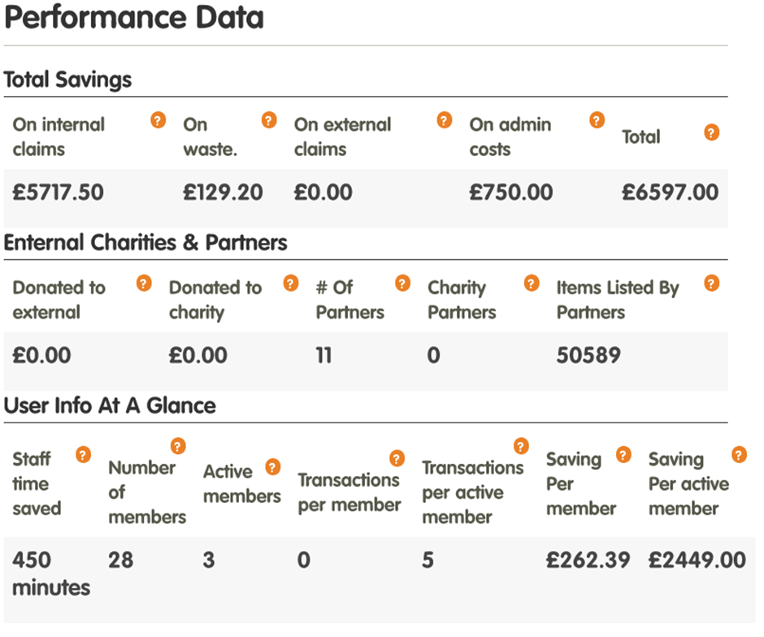We get asked regularly by our members why we collect data on so many different metrics, what we do with that data, and how they should then use that data to their advantage?
In this guide, we will look at these questions and try to help you see the bigger picture of reuse data, and how it is more valuable than simply knowing how many items have been traded and to whom.
What do we track?
Back in April 2014, we upgraded our reporting system to version 2, based on two and half years of feedback and research with members. We were keen to discover what their greatest needs were, and what the most desirable and actionable metrics would be. Since then, based on continued feedback, we have refined the metrics even further, including new metrics relating to donations and user time savings.

Here’s a breakdown of what we’re reporting:
- Financial savings - The cost savings of procurement, waste, and staff time.
- Waste data - Waste diversion by KG, as well as internal and supply chain savings. Data is customisable for the admin based on local waste charges.
- Supply chain emissions - Our unique database assesses Greenhouse Gas (GHG) emissions avoidance in the supply chain and displays them as a CO2e equivalent.
- Social value and CSR - The social value data for reuse relates to information captured about donations.
- User monitoring - Each user’s activities on the system can be tracked for security, behaviour, adoption rates, and fraud.
- Stock management - The flow of reused resources and assets through the organisation can be monitored, allowing procurement to block purchases of surplus stock.
- Audit - Every transaction is tracked and traceable through our database, and can be downloaded for private use.

Can we explain some of our methodologies?
Sure, we’d be glad to.
Waste
Since launching version 2 of our waste financial savings methodology, we have continued to consult experts to improve the accuracy, especially for local costs, volume, and staff time. We’ve even introduced customisable features so that admin can edit fields for their own organisation’s situation, relating to skip hire costs, average weight, and staff time for skip loading.
Each item that is transferred is given a weight value (KG) based on the ‘Measure Your Treasure’ guidelines, originally produced by the Community Recycling Network UK, in consultation with community waste sector groups.
The Math
(Cost of skip + cost of man per hour) ➗ (the weight of the skip in KG) = Cost of disposing of 1KG of waste. The cost of disposing of 1KG is then multiplied by the weight of the item/s (KG) to discover the waste cost savings (£).
Supply chain emissions:
Our unique database assesses Greenhouse Gas emissions avoidance in the supply chain, due to reuse of assets within and between organisations. This is expressed as Carbon Dioxide Equivalent (CO2e) and the source data is from the UK government.
Audit
Every transaction is tracked and traceable, with the transaction details entering our secure and reliable database and ledger. This is where most original source data comes from and forms the basis for much of the reporting.

Why do we track it?
Of course, we are curious to see how our customers are performing and how popular the service is, but tracking the data serves way more purposes than that.
- By viewing organisation-specific performance data we can see who needs help, or who we can learn the best practices from to share with our audience.
- We know that data creates action, so the more data, the more important decisions organisation can make based on it.
- The more KPI data available, the more transparency our members can have with the world, namely their customers and potential customers.
- Making data available for download for each organisation helps them communicate the benefits to management, staff, and stakeholders, allowing them to pursue expansion, funding, or encourage partner organisations to follow suit.
- In years to come, we will be able to create a comprehensive document for the growth of reuse in large organisations in the UK, which will be a valuable resource for future sustainability movements.









